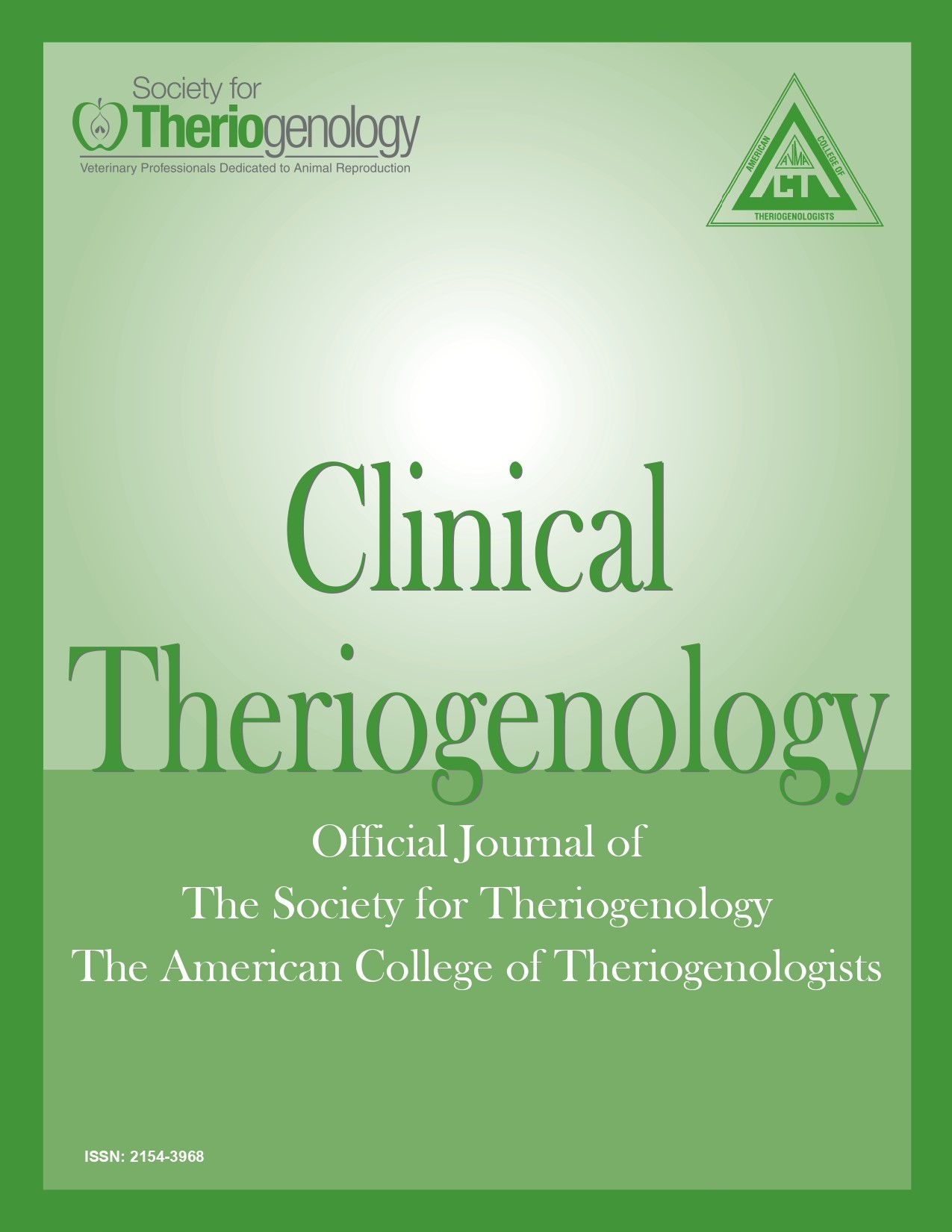Modified diff-quick staining for canine sperm morphology
Abstract
Sperm morphology assessment requires specialized microscopes or stains. Diff-quick (DQ) is considered a universal stain that is cost-effective; however, morphological evaluation of sperm using DQ staining is poor and not encouraging. Therefore, this study investigated modifications to the DQ protocol to improve identification of morphological defects of dog sperm and compared the modified DQ techniques with eosin-nigrosin, Karras, and differential interference contrast microscopy [DIC]). One ejaculate from each of 9 dogs was used. To perform the proposed modified DQ techniques (DQ1 and DQ2), dried semen smears were fixed by immersing for 10 seconds in solution 1 of DQ and 5 minutes each in solutions II and III of the kit. After the third stain solution, slides in DQ1 were rinsed in water whereas slides in DQ2 were not rinsed but were vertically supported to facilitate stain drainage. Results suggested that the standard DQ protocol overestimated normal sperm and detached heads whereas underestimated abnormal heads and total defects compared to DIC, Karras, eosin-nigrosin, and DQ2. Acrosome abnormalities were only detectable with Karras, DIC, and DQ2. In conclusion, prolonging exposure to DQ staining solutions enhanced sensitivity in sperm morphological evaluation, and avoiding rinse as a final step in the DQ protocol improved visualization of certain acrosome defects in dog sperm. Therefore, modified DQ techniques can serve as a viable alternative for dog sperm morphology evaluation in clinical practice.
Downloads
References
2. Marelli SP, Beccaglia M, Bagnato A, et al: Canine fertility: the consequences of selection for special traits. Reprod Domest Anim 2020;55:4–9. doi: 10.1111/rda.13586
3. Lopate C: Applied animal andrology: dog. In: Chenoweth PJ, Lorton S: editors. Manual of Animal Andrology. Wallingford, UK: CABI International; 2022. p. 160–186.
4. Soderberg SF: Canine breeding management. Vet Clin North Am Small Anim Pract 1986; 16:419–433. doi: 10.1016/S0195-5616(86)50051-6
5. Kolster KA: Evaluation of canine sperm and management of semen disorders. Vet Clin North Am Small Anim Pract 2018;48:533–545. doi: 10.1016/j.cvsm.2018.02.003
6. Arruda R, Silva D, Affonso F, et al: Methods for assessment of sperm morphology and function: actual moment and future challenges. Rev Bras Reprod Anim 2011;35:145–151.
7. Brito LFC, Greene LM, Kelleman A, et al: Effect of method and clinician on stallion sperm morphology evaluation. Theriogenology 2011;76:745–750. doi: 10.1016/j.theriogenology.2011.04.007
8. Segabinazzi LG, Mercês Chaves LF, Araujo EA, et al: Dip quick staining modified for morphological evaluation to equine spermatozoa. J Equine Vet Sci 2017;55:71–75. doi: 10.1016/j.jevs.2017.02.015
9. Kustritz M: Determining the optimal age for gonadectomy of dogs and cats. J Am Vet Med Assoc 2007;231:1665–1675. doi: 10.2460/javma.231.11.1665
10. Pozor MA, Zambrano GL, Runcan E, Macpherson M. Usefulness of Dip Quick Stain in evaluating sperm morphology in stallions. Proc Am Ass Equine Practnrs 2012;58:506–510.
11. Randall CJ, Negri AP, Quigley KM, et al: Sexual production of corals for reef restoration in the Anthropocene. Mar Ecol Prog Ser 2020;635:203–232. doi: 10.3354/meps13206
12. Soler C, Alambiaga A, Martí MA, et al. Dog sperm head morphometry: its diversity and evolution. Asian J Androl 2017;19: 149–153. doi: 10.4103/1008-682X.189207
13. Wysokin’ska A, Wójcik E, Chłopik A: Evaluation of the morphometry of sperm from the epididymides of dogs using different staining methods. Animals 2021;11:1–11. doi: 10.3390/ani11010227
14. Surmacz P, Niwinska A, Kautz E, et al: Comparison of two staining techniques on the manual and automated canine sperm morphology analysis. Reprod Domest Anim 2022;57:678–684. doi: 10.1111/rda.14100
15. Papa FO, Alvarenga MA, Carvalho IM, et al: Karras spermatic coloration modified by the use of barbatimão (Stryphnodendrum barbatiman). Arq Bras Med Vet Zootec 1988;40:115–123.
16. Hancock JL: A staining technique for the study of temperature-shock in semen. Nature 1951:166: 323–324. doi: 10.1038/167323b0
17. Oehninger S, Kruger TF: Sperm morphology and its disorders in the context of infertility. Fertil Steril 2020;2:75–92. doi: 10.1016/j.xfnr.2020.09.002
18. Kruger TF, Ackerman SB, Simmons KF, et al: A quick, reliable staining technique for human sperm morphology. Syst Biol Reprod Med 1987;18:275–277. doi: 10.3109/01485018708988493
19. Mota PC, Ramalho-Santos J: Comparison between different markers for sperm quality in the cat: diff-quick as a simple optical technique to assess changes in the DNA of feline epididymal sperm. Theriogenology 2006;65:1360–1375. doi: 10.1016/j.theriogenology.2005.08.016
20. Bastos YHGB, da Silva CF, Gomes GM, et al: Evaluation of different coloration techniques for smears obtained by aspiration biopsy puncture of bull testis. Rev Saúde 2015;6:05. doi: 10.21727/rs.v6i2.961
21. Foster JA, Gerton GL: The acrosomal matrix. Adv Anat Embryol Cell Biol 2016;220:15-33. doi: 10.1007/978-3-319-30567-7_2

This work is licensed under a Creative Commons Attribution-NonCommercial 4.0 International License.
Authors retain copyright of their work, with first publication rights granted to Clinical Theriogenology. Read more about copyright and licensing here.





